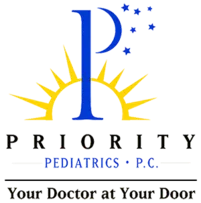
Returning to School During COVID-19
Many parents are wondering if it is safe for their children to return to school during the pandemic. The latest AAP advice says children learn best when they are in school. However, returning to school needs careful steps in place to keep students and staff safe. This article helps explain to parents the ways in which schools should help prevent the spread of COVID-19 when students and teachers return to classrooms this fall. Read the full article in English or Spanish.
Parenting Resources During COVID-19
The novel coronavirus (or COVID-19) pandemic is new territory for all of us, and there’s no fear like the unknown. Our kids need us more than ever before, so Children's Healthcare of Atlanta pulled together some resources to help us all get through this challenging time:
From the Johns Hopkins Center for Health Security
UNITED STATES
The US CDC reported 3.70 million total cases (67,574 new) and 139,659 deaths (877 new). In total, 25 states and New York City have reported more than 40,000 total cases, including California with more than 375,000 cases; Florida and Texas with more than 300,000; New York City with more than 200,000; and 7 additional states with more than 100,000. The US is currently averaging more than 750 deaths per day, and it could reach 150,000 cumulative deaths in the next 2 weeks.
The Johns Hopkins CSSE dashboard reported 3.79 million US cases and 140,716 deaths as of 1:00 pm on July 20__a 3.7% death rate in the USA.
The WHO recommendation of 5% COVID-19 test positivity rate to support easing social distancing measures. The US is at 8.5% positivity rate (up nearly 90% since June 16). The US is #4 globally in terms of per capita daily incidence of COVID-19 cases. The average U. S. mortality is currently 800 deaths per day, up from 581 deaths per day on July 8.
CHILDREN & SCHOOLS: As the US school year rapidly approaches, federal, state, and local government officials are working to develop and implement plans to resume classes. Proposals range from full-time, in-person classes to online/remote classes only, including a myriad of hybrid options in between. Much of the uncertainty and debate revolves around the direct risk to children and the role they play in community transmission. It is generally understood that children are at lower risk for severe COVID-19 disease and death than adults—although, certainly not zero risk—but it is much less clear how easily children transmit the infection to others, including adults or other high-risk individuals at home or in the community.
A recent study by researchers in South Korea, published in the US CDC’s Emerging Infectious Diseases journal, found that SARS-CoV-2 transmission was far more common in household settings compared to public settings. Based on analysis of more than 59,000 contacts of more than 5,700 COVID-19 “index patients,” the researchers found that household contacts were more than 6 times more likely to become infected than non-household contacts. The study identified cases in 11.8% of household contacts, compared to only 1.9% of non-household contacts. Notably, households with an “index patient” aged 10-19 years were at even higher risk for transmission—cases identified in 18.6% of household contacts, compared to 11.8% in households with “index patients” of other ages. The lowest transmission risk among household contacts was for “index patients” aged 0-9 years. In these households, cases were identified in only 5.3% of household contacts; however, this was still greater than the overall risk for non-household contacts. This indicates that children who are infected at school could transmit the infection at home more easily than in other settings, particularly for older children, which would put other family members at increased risk. The study only evaluated symptomatic cases, so further evaluation is required to better characterize the role of asymptomatic or pre-symptomatic transmission by children.
It appears that there may be significant risk of transmission by children as they return to in-person classes, and many schools are evaluating options for remote/online classes this fall. Other options include home schooling, which some parents are investigating after positive experiences with remote classes this spring after most schools closed. While these options may appear similar on the surface, remote classes and home schooling are very different. Home school options vary widely, including utilizing existing curricula or developing personalized course work, and the standards and requirements vary from state to state. While online classes and home school may be effective, they may not be viable options for everyone. These options may require computers, tablets, or smartphones and reliable high-speed internet service to fully participate, particularly for live-streamed classes or video sessions. Availability for both computers and internet services may not be feasible for lower-income families or those living in remote areas, and many parents may not be able to continue to work remotely or remain at home in order to supervise their children during the day.
Remember the Census? – It is not too late to complete the 2020 Census. The count determines how billions are spent to support things like education, healthcare, and community services – all important in the health and well-begin of children and the citizens of this state. Be sure you is counted. The Census impacts healthcare for COVID-19 in many ways.
This link for the Census quick form can access the census form online for easy completion if you have not completed your mail in form.
Dr. T
